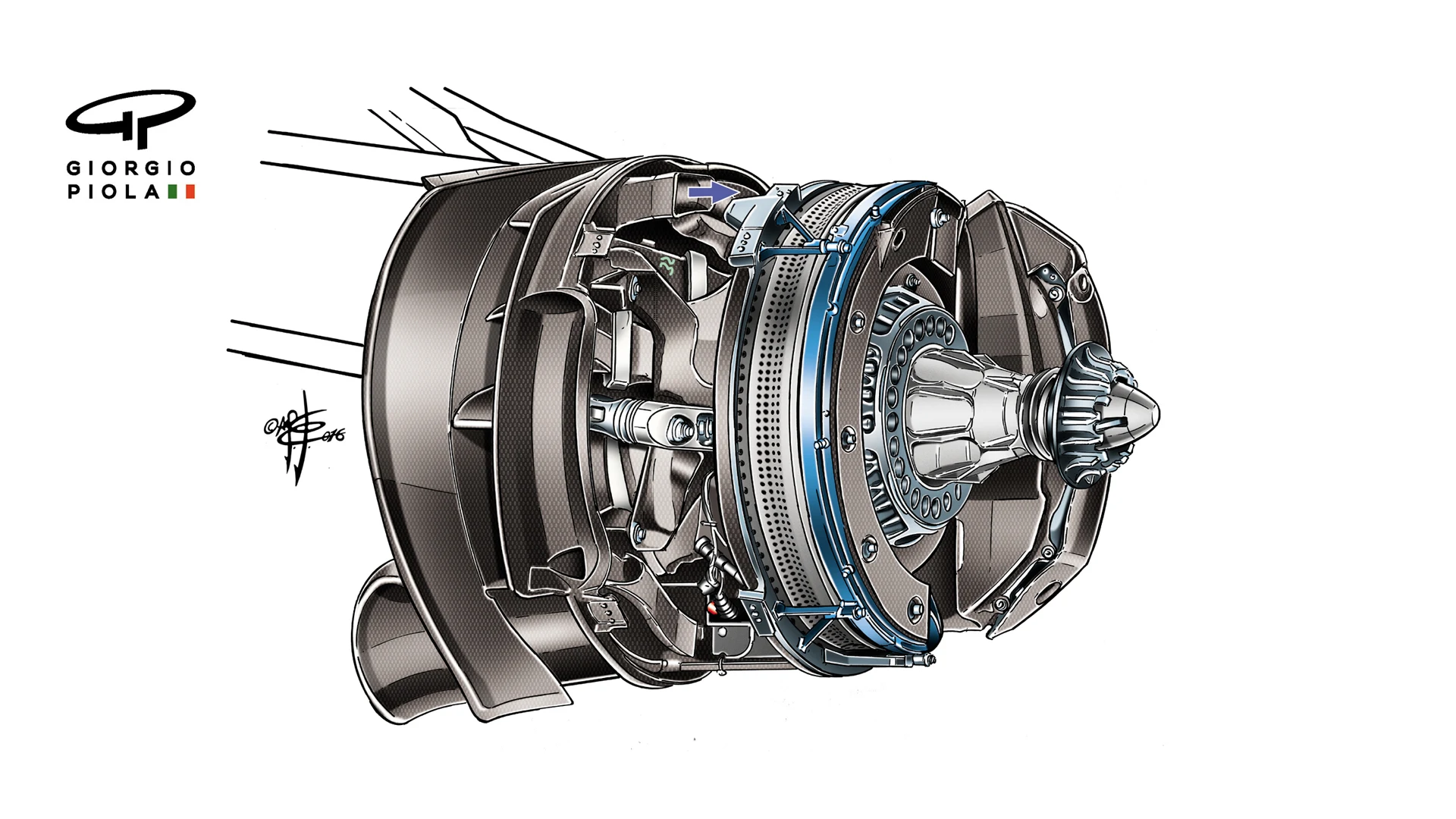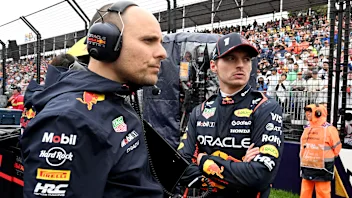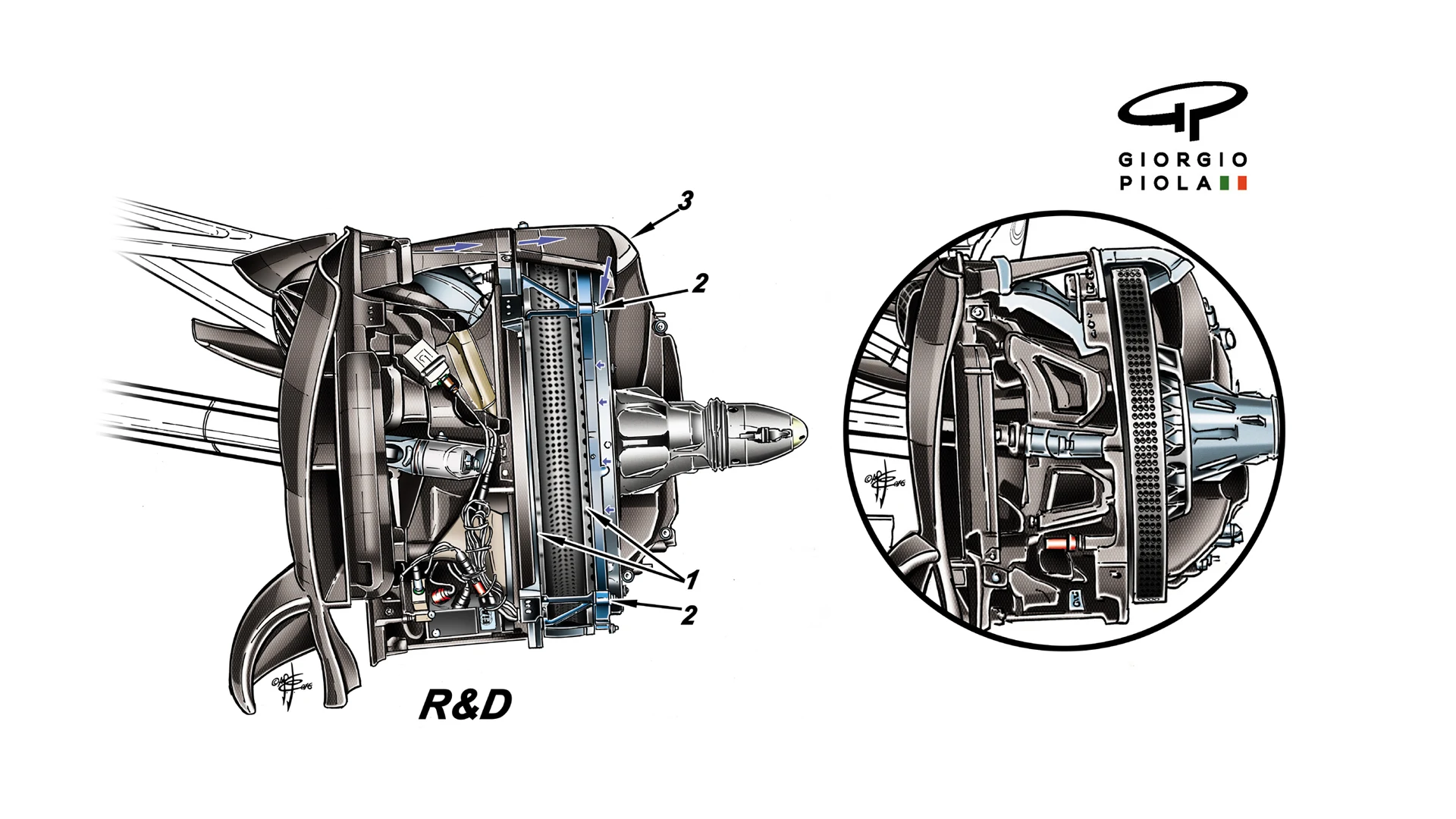Mercedes technical chief Paddy Lowe has admitted that in recent races the world champions have been testing research and development parts for future evolution, with the emphasis on 2017 rather than current season updates…
We have already looked at their radical new front wing endplate, while this experimental brake set-up was trialed in Friday morning free practice in Monza, Austin and Mexico - all circuits with very long straights and hence very heavy braking events. The team have added two additional spacers (1), one on either side of the Carbon Industries brake disc, both made of the same friction material as the disc. They are mounted very close to the disc using a special frame (2) - the shape of which is clearer in the drawing below - and are cooled by the inside of the brake duct (3).

It is difficult to know the exact purpose of this solution. It could be to provide better brake temperature and bite at the beginning of the braking area, or it could be to dissipate heat away from the discs by transferring it to the spacers, which have their own cooling holes and dedicated duct (see blue arrows). It is also possible the set-up is designed to simulate the slightly wider brake discs that will become legal for 2017, allowing the team to study the thermal impact on the brakes and the tyres.
Next Up
Related Articles
 Sainz hopes point-less finish in Abu Dhabi ‘serves as a wake-up call’
Sainz hopes point-less finish in Abu Dhabi ‘serves as a wake-up call’ Verstappen pays tribute to Lambiase after ‘emotional year’
Verstappen pays tribute to Lambiase after ‘emotional year’.webp) VOTE: Choose your favourite race of the 2025 season
VOTE: Choose your favourite race of the 2025 season F1, the FIA and 11 teams sign 2026 Concorde Agreement
F1, the FIA and 11 teams sign 2026 Concorde Agreement An exclusive look into Pierre Gasly's off-track life
An exclusive look into Pierre Gasly's off-track life PalmerThe 6 defining moments of Norris’ title-winning season
PalmerThe 6 defining moments of Norris’ title-winning season
